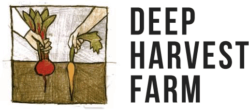Variety Trials 101
Every year, we pick a handful of crops that we want to test in variety trials. What’s a variety trial? Thanks for asking! A variety trial is like a pageant for vegetable or flower varieties, but instead of evaluating for congeniality or swimwear we test for color, vigor, flavor, disease-resistance and other traits a gardener or farmer should care about. If we want to trial, say, red butter lettuces, then we scour every seed catalog (and in some cases more obscure sources of seed like the USDA’s Germplasm Resource Information Network) we can find for red butter lettuces that are open-pollinated (we can’t save seed on the hybrids!). Each variety is then planted out in blocks in the same bed, with enough plants of each variety (usually at least 10, sometimes a lot more) to ensure that we get an accurate evaluation of its genetic makeup. Then, when the crop is mature we gather the farm crew, grab some clipboards and head out for evaluations, which in the case of butter lettuce might be based on flavor, head-density and uniformity, color, and downy mildew resistance. The winner is chosen based on its competitiveness in all, or most of the desired categories. The following season that variety will be planted out in a larger population, not surrounded by other varieties of the same species, for seed saving. This year (2018), we’re trialing six types of dill, six yellow bush beans, eight red leaf lettuces, six different cilantros, five kinds of popcorns, five serrated arugulas, and four varieties of purple sprouting broccolis. It might be an overly ambitious list, but our nerdy biology brains can’t get enough of this stuff! The upshot of all this work is is that our varieties will be more likely succeed on PNW farms and gardens (due to our shared climate, soils and pests) than similar varieties offered by other companies.
